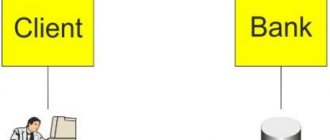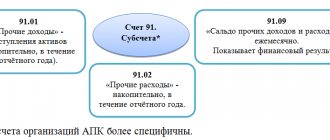Accounting in construction has its own individual characteristics. Carrying out accounting requires special industry knowledge of the accountant and practical experience. Accounting in construction is carried out on the basis of current legal acts that regulate: the procedure for investing funds, the procedure for accounting for contract agreements and other provisions. General requirements for accounting allow you to correctly calculate the company's income and expenses. Depending on the specifics of the industry, additional regulatory sources may apply.
Contractor accounting
Accounting is carried out on the basis of the following regulations: PBU 9/99, PBU 10/99, PBU 2/94, PBU. The entire cost part is subject to division into the elements listed above. Construction costs are displayed in accordance with accounting account 20 “Main production”. Costs for materials, payments to employees are recorded, and settlements with suppliers are additionally displayed. Phased acceptance is carried out using account 46, with the formation of posting Dt 46 Kt 90.
Works related to construction
- construction, reconstruction and expansion of permanent and temporary buildings and structures and associated installation work;
- installation and dismantling of crane tracks;
- construction of external and internal networks of water supply, sewerage, district heating, gasification and energy supply;
- arrangement of foundations, foundations and supporting structures for equipment;
- landscaping and landscaping of development areas, as well as towns and cities;
- other construction work.
Finished works on a similar topic
- Course work Accounting for construction costs 450 rub.
- Abstract Cost accounting for construction of facilities 230 rub.
- Test work Accounting for construction costs 250 rub.
Receive completed work or specialist advice on your educational project Find out the cost
Accounting in a construction organization
Accounting is somewhat different from the norms in force for other business entities. The differences lie in the documentation. To carry out mutual settlements with contractors, construction organizations use the following documents:
- Form No. KS-2;
- Form No. KS-3.
Form 2 is drawn up by the contractor based on the results of the work performed. Form 3 is the basis for mutual settlements between the customer and the contractor. The first document can be drawn up upon completion of the entire scope of construction or taking into account the phased implementation of work. The last option is most preferable for contractors.
Features of materials accounting in construction
The contract between the customer and the contractor must reflect the method of purchasing materials. The following options are possible:
- Paid transfer of materials from the customer to the contractor
In this case we are talking about the usual purchase and sale of material assets. For the customer this is the implementation:
DT 62 – KT 90.1
DT 90.3 – CT 68.2 – if the customer works with VAT
The contractor purchases goods and materials with attribution to account 10:
DT 10 – KT 60
DT 19.3 – CT 60 – if the contractor also uses the general tax system
The contractor includes the price of purchased materials in the cost of work performed and reflects it in forms KS-2 and KS-3.
DT 20 – KT 10 – materials written off as expenses
The contractor may pay the customer the cost of purchased materials.
DT 60 – KT 51
But more often these calculations upon completion of the work by the contractor are “closed” through offset against the cost of construction.
DT 60 – KT 62
- Transfer of customer-supplied materials to the contractor
The main feature of the transfer of customer-supplied materials is that the contractor does not pay for them and does not include them in the price of the work performed. In the customer's accounting, this operation is not a sale. The cost of transferred inventory items is not debited from the customer’s balance sheet, but is reflected in account 10, subaccount “Materials transferred for processing.”
The Contractor keeps records of materials transferred as customer-supplied raw materials on off-balance sheet account 003 “Materials accepted for processing”, separating two sub-accounts:
- customer-supplied raw materials (DSM) in the warehouse;
- DSM in production.
The contractor must provide the customer with a report on the materials used. Based on this report, the customer will write off their cost.
If after completion of construction there are unused customer-supplied materials, they must be returned to the customer. This operation is not an implementation for the contractor.
- Independent procurement of materials by the contractor
The contractor can purchase the necessary materials from “third” organizations that are in no way connected with the customer. To do this, he can use both his own funds and an advance received from the customer.
In this case, the price of purchased materials is included in the cost of construction work reflected in forms KS-2 and KS-3. The purchase of materials from third parties and their write-off is reflected in accounting in the same way as when purchased from a customer (option 1).
When transferring materials using any of the methods, you must fill out an invoice. Typically, the standard M-15 form is used for this.
Postings for specific construction expenses
The status of the customer and his investments in construction determine the accounting plan. Postings for specific construction expenses are made as follows:
- The operation of the company transferring materials and equipment to the contractor in an amount over 20,000 rubles is reflected in the section “Contributions to non-current assets” (debit 08) and in the section “Settlements with suppliers and contractors” (credit 60).
- If the amount is less than 20,000 rubles, the action is carried out through “Materials” (debit 10) and “Settlements with suppliers” (credit 60).
- The fact of the initial operation of the object is recorded through “Fixed capital” and “Contribution to non-current assets”.
- To write off building materials, use the “List of Written Off Materials”.
- Percentage tax surcharges are displayed in the “VAT” section, indicating the amount in a special separate cell.
- After completion of the construction process, state registration of the object is carried out and data is entered into the “Fixed Capital”.
All of the above rules apply to accounting for the customer construction company.
Postings from the contractor are drawn up in accordance with debit 20 “Main production”, which will subsequently correlate with credit 60 (payment for supplies), credit 70 (settlements with employees) and credit 10 (inventories).
During phased construction, the customer accepts the results of the work at each stage. In this case, debit 46 is combined with credit 90.
Carrying out accounting operations requires highly qualified accountants. Quite often, companies invite highly specialized specialists to fill this position.
Accounting in construction for the customer
- Construction for own needs.
If the customer builds an object for himself, then this is an investment in non-current assets, which is reflected in account 08. The customer takes into account costs on the basis of forms KS-2 and KS-3.
The customer can independently carry out some of the necessary work. For example, develop design documentation or order it from a third party. Also, the customer can buy the materials himself and ship them to the contractor on a toll basis. All these costs also increase the cost of the facility being built.
DT 08 – KT 60 – reflects the cost of work performed by the contractor
DT 08 – KT 70 (69.76, 10...) – reflects the customer’s costs associated with construction
DT 01 – KT 08 – the facility was put into operation
As part of construction, landscaping is often carried out. This type of work must be taken into account as follows:
- If improvement work is carried out before the construction project is put into operation, then the costs are reflected in the following entries:
DT 08 – KT 60 (10, 69, 70...)
- if the work is postponed until after the facility is put into operation, you need to create an expense reserve in account 96 according to the estimated cost.
DT 08 – KT 96 – reserve created
DT 96 - CT 60 (10,69,70...) - actual costs of performing work are written off at the expense of the reserve.
- Construction for investors
Often, the customer hires a contractor and organizes construction work not for himself, but for another organization - the investor. In this case, account 76 is used in accounting, on which a special sub-account “Settlements with investors” should be opened.
DT 51 – KT 76 – advance received from investor
DT 26 (25) – KT 70 (69.60...) + DT 20 – KT 26 (25) – customer costs for organizing construction
DT 08 – KT 60 (70, 69, 76, 10...) – customer costs for the construction of the facility
DT 76 – KT 08 – the object was transferred to the investor (cost excluding VAT)
DT 76 – KT 19 – transferred to the investor VAT included in the cost of the object (according to the consolidated invoice)
DT 76 – KT 90.1 – customer’s remuneration reflected
DT 90.2 – KT 20 – the customer’s own costs are taken into account.
Taxation in construction
Keeping tax records in construction allows you to create and summarize information that will allow you to determine the tax base based on primary documentation data. The goals are the following: generating reliable information, ensuring control of the completeness and correctness of calculations for subsequent payment to the budget.
The basic principles of taxation in construction are the economic justification of expenses and their documentary justification. Taxation in construction should be compiled in such a way that the information makes clear the following nuances:
- methods for determining income and expenses;
- algorithms for the formation of tax bases;
- the methods used to form reserves;
- methods of temporary distribution of expenses;
- mechanisms for transferring part of expenses to subsequent periods;
- formation of other tax parameters.
The activities of construction organizations are carried out in accordance with current tax legislation. Regulatory documents contain provisions that take into account the specifics of construction activities.
Income tax does not include expenses for the acquisition of depreciable property, expenses for modernization and technical re-equipment of the facility. Income tax is not calculated in the case of additional work to restore the property.
Amounts saved during construction work are subject to income tax as non-operating income. Accounting is carried out for both direct and indirect expenses of the company. The customer independently determines the list of funds spent related to the provision of services and the procedure for their distribution. The result is necessarily recorded in the tax accounting policy of the enterprise.
Fundamentals of the accounting policy of a road construction company
The Company's accounting policy is formed in accordance with the principles established by the Accounting Regulations “Accounting Policy of the Organization” PBU 1/2008, approved by Order of the Ministry of Finance of the Russian Federation dated October 6, 2008 No. 106n:
— assumptions of property isolation, which means that the Company’s assets and liabilities are accounted for separately from the assets and liabilities of other legal entities and individuals;
— assumptions of continuity of activity of the Company, which consists in the fact that it expects to continue its activities in the foreseeable future and it has no intention or need to liquidate or significantly reduce its activities and, therefore, obligations will be repaid in the prescribed manner;
— assumptions about the consistency of application of the adopted accounting policies in its practical activities;
— assumptions of temporary certainty of the facts of economic activity.
Program "BIT.CONSTRUCTION"
The BIT.CONSTRUCTION program is used to automate the tasks of all departments of a construction company. The program allows you to conduct prompt and reliable reporting on objects. The BIT.CONSTRUCTION program allows you to:
- calculate workers' salaries for each facility;
- manage financial flows, consolidate, maintain management accounting;
- maintain accounting records for contractors and customer-developers;
- automate the work of supply departments;
- systematize the work of sales departments;
- automate control processes for construction machines and mechanisms.
The BIT.CONSTRUCTION system is distinguished by its modular architecture. Each module is designed to solve a specific industry problem. The program includes several automated systems and includes comprehensive solutions for customers, contractors, supply department employees, foremen, accountants, etc. The selection of a line module is made by the customer depending on the goals and objectives set.
Accounting for expenses by object
All costs were collected at one capital construction site, since it was planned that it would be a single complex consisting of three buildings. But then it was decided that these would be three different objects. Is it possible to share costs in this case? And what if the actual costs differ from the estimated costs? Let's figure it out.
The methodology is not correct
First, you need to decide whether the decision was initially made correctly to keep records for the complex as a whole, and not for each object under construction. In accordance with clause 2.1. Provisions on accounting for long-term investments (letter of the Ministry of Finance of Russia dated December 30, 1993 No. 160) accounting for long-term investments is carried out based on actual expenses for the entire construction and for individual objects included in it. The Chart of Accounts provides for subaccount 08-3 “Construction of fixed assets”, which takes into account the costs of construction of buildings and structures. Thus, the regulatory framework for accounting clearly requires maintaining records for each facility under construction.



